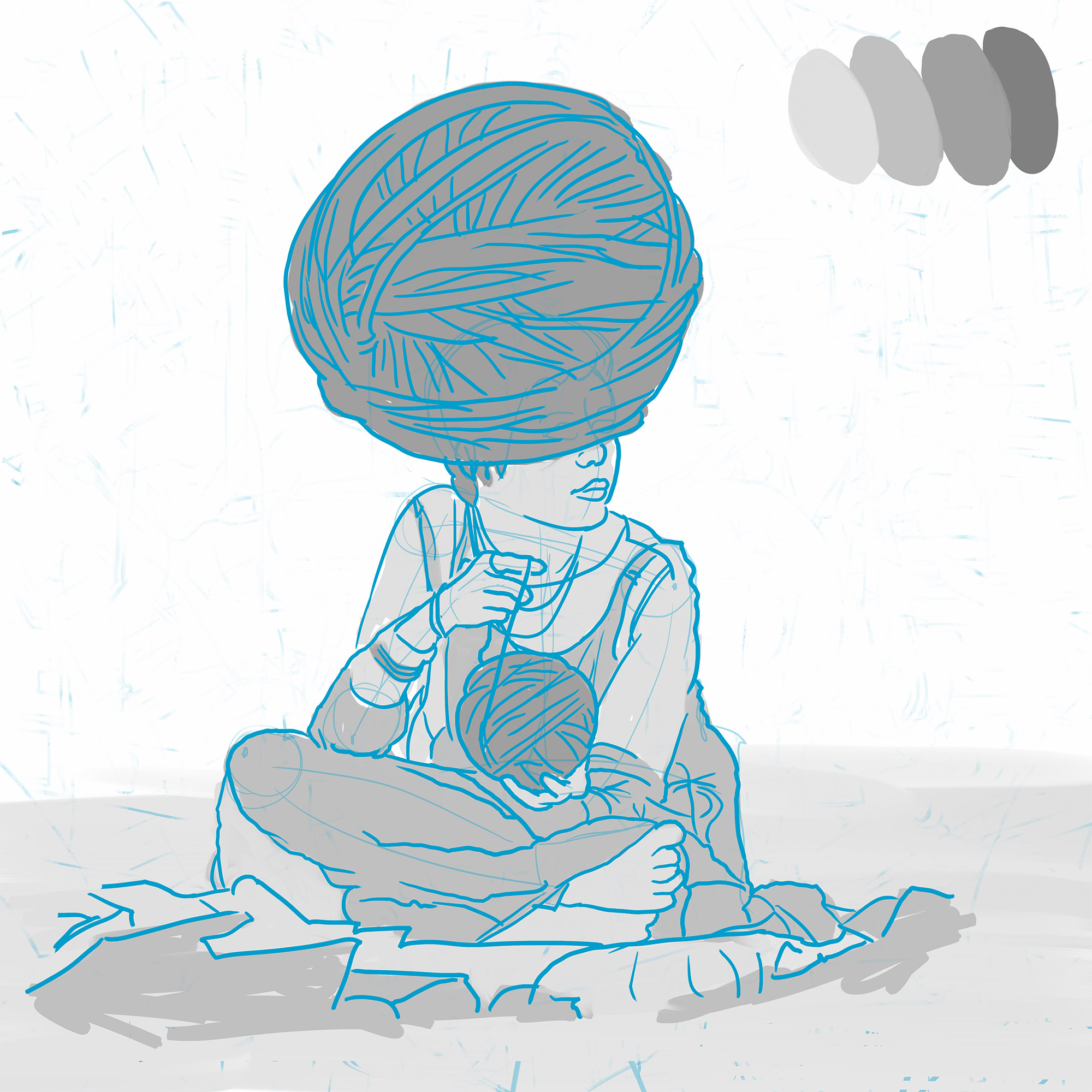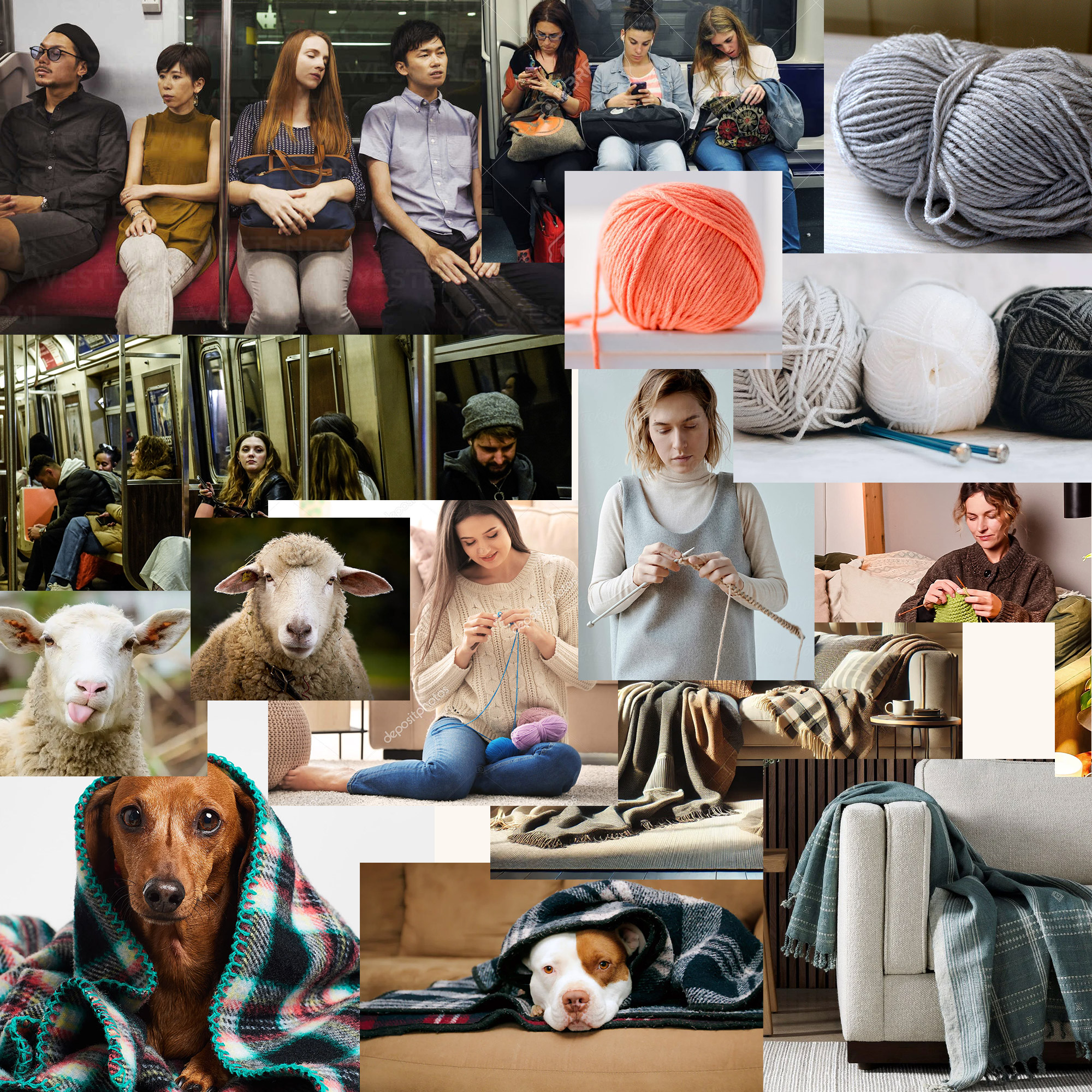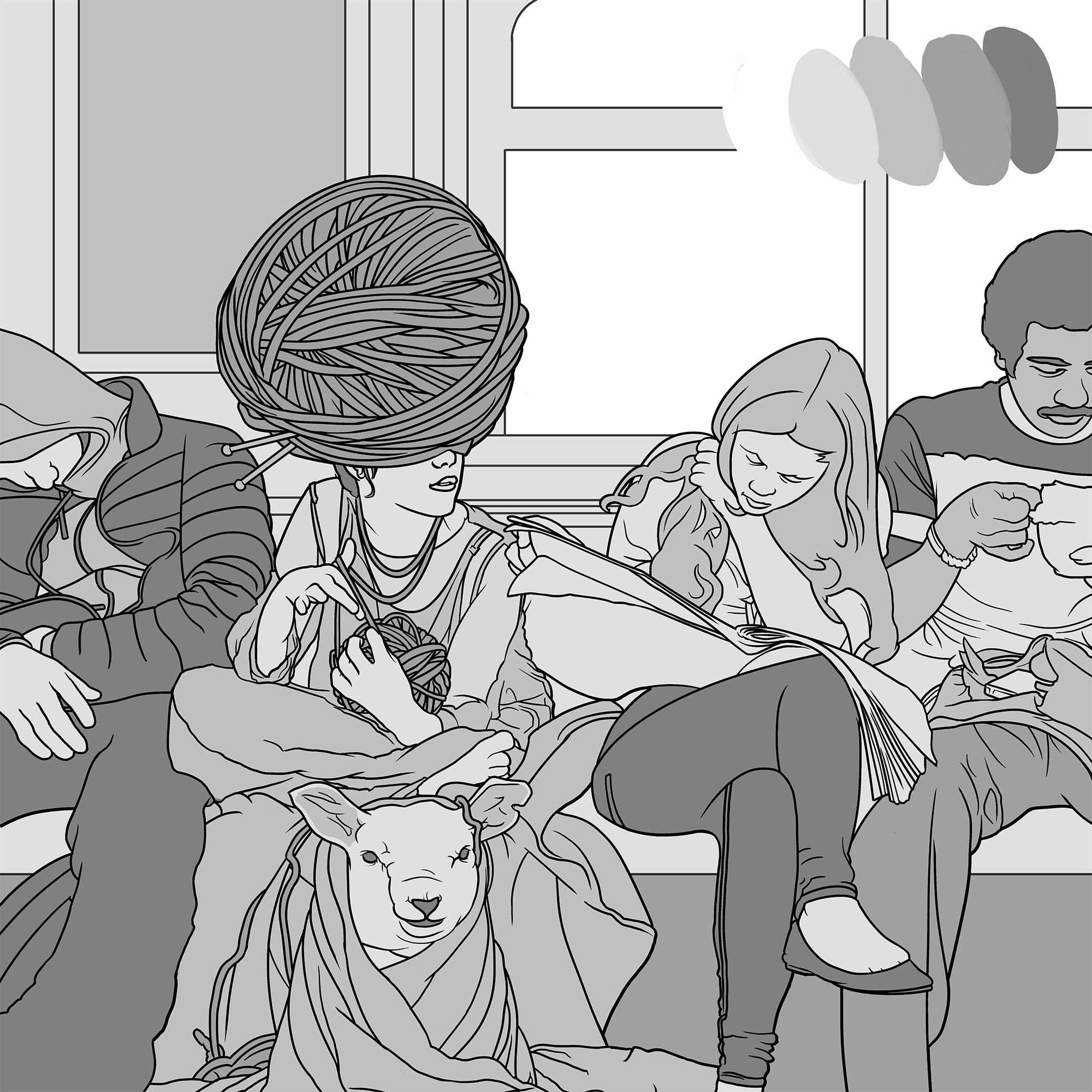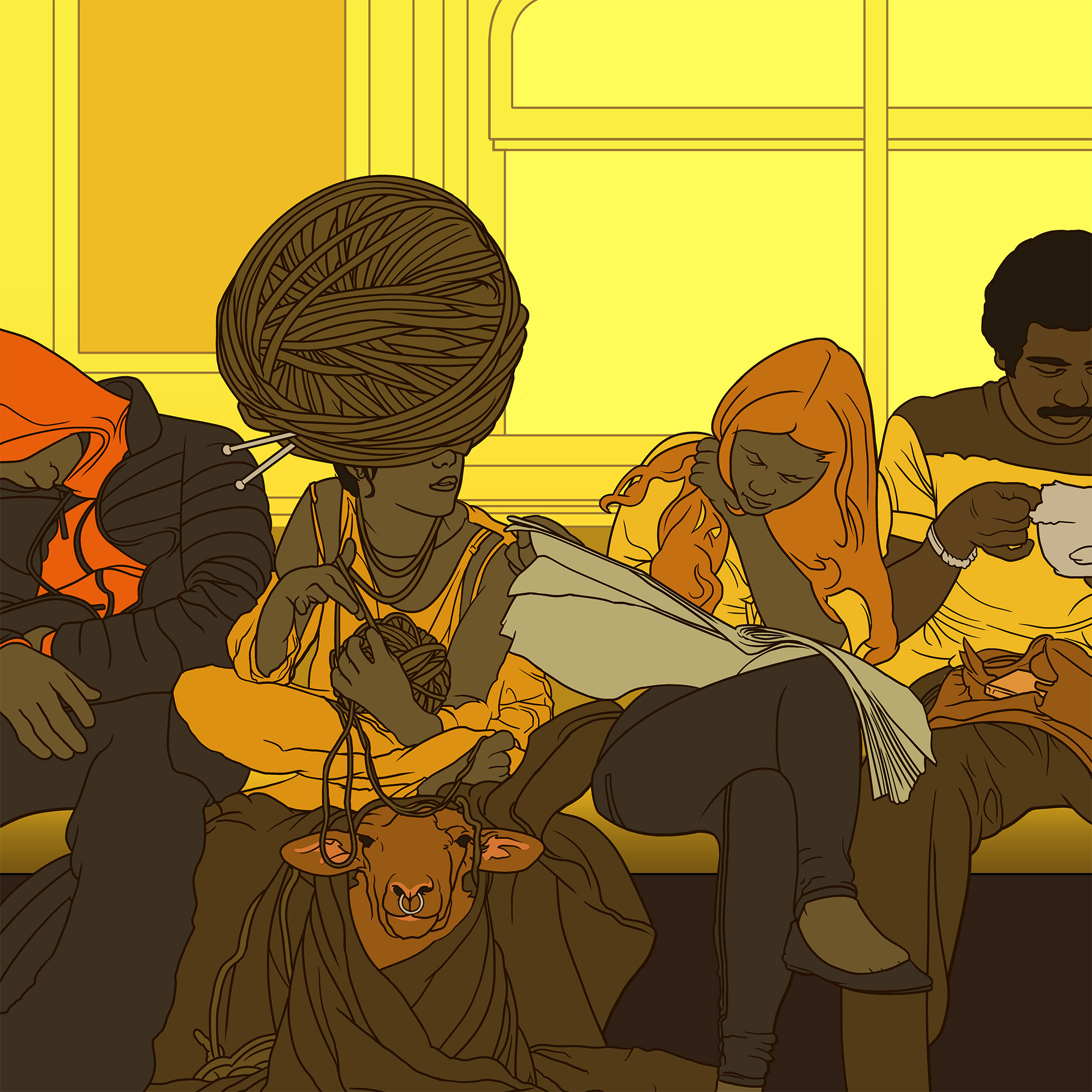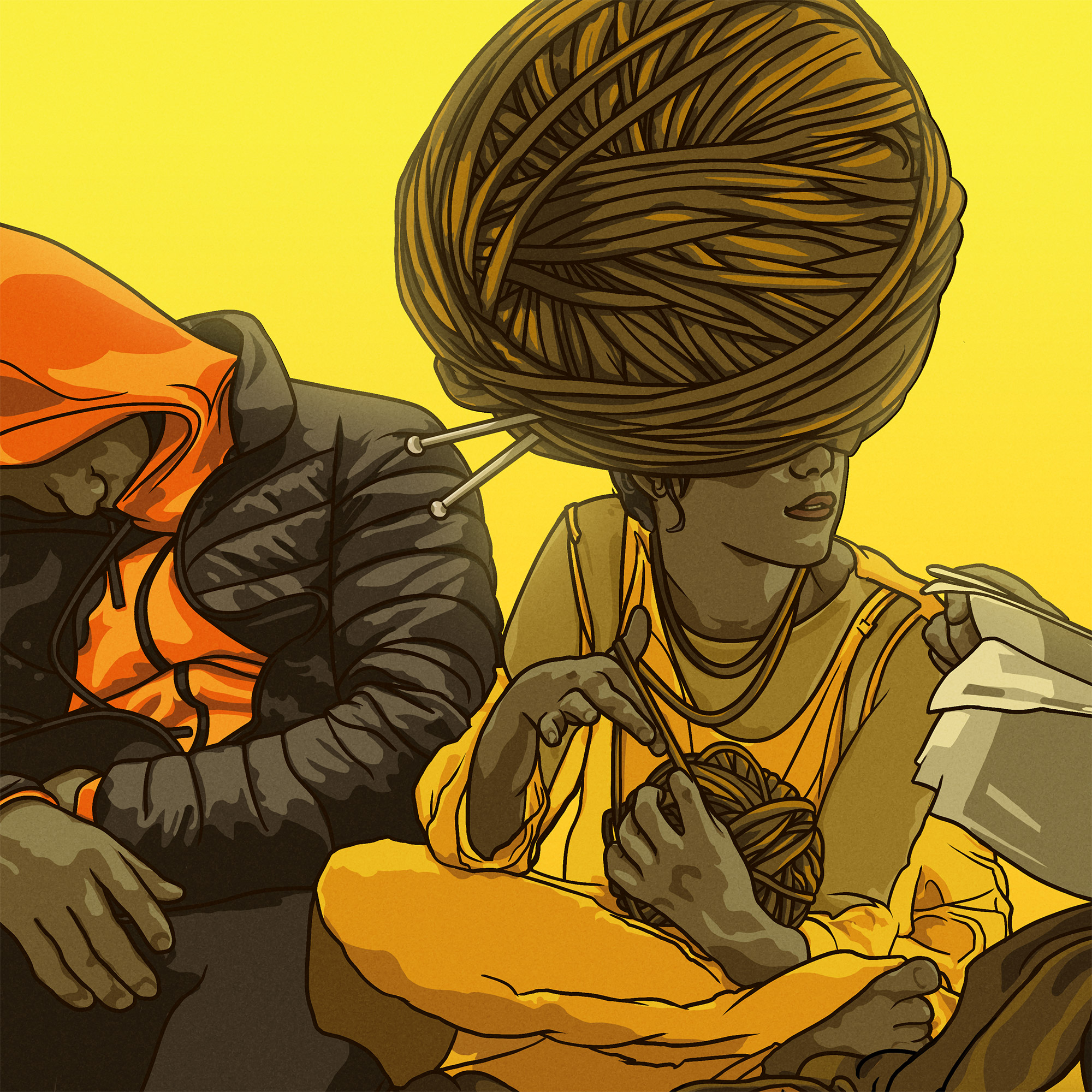This piece started with a few sketches of a girl getting ready to knit with a few large balls of yarn in her lap. I’d originally planned to just tie her up in a giant spiderweb of strands, but as I redrew sections and moved the balls of yarn around, one accidentally moved over her head and become a hat, and the initial happy-accident concept was born.
Once a base idea is in place, I’ll add details until there’s enough interesting bits to carry a full piece, in this case deciding if she’ll be knitting or getting ready to knit, and fleshing out her location.

